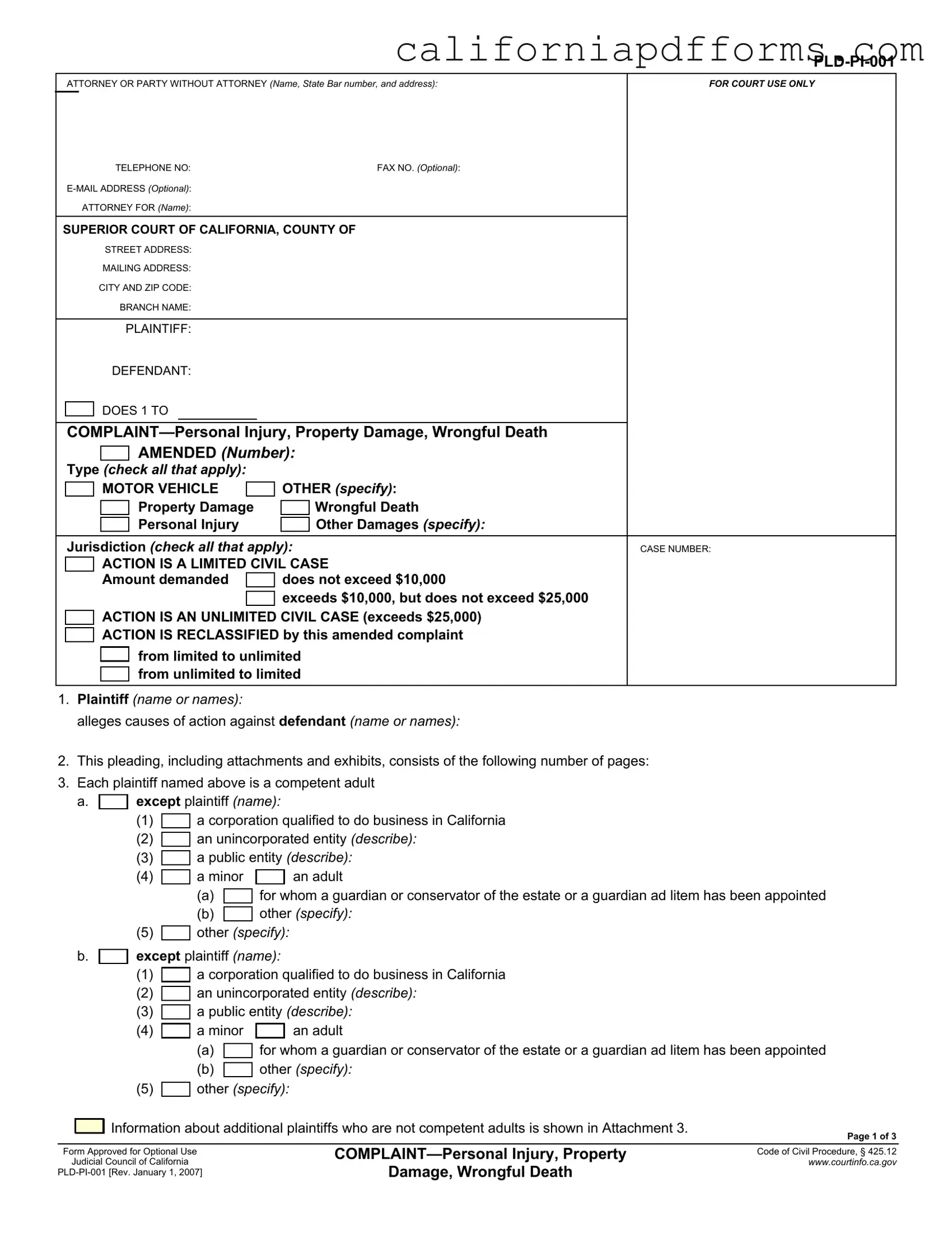The California Complaint form is primarily used to initiate a civil lawsuit in the Superior Court of California. It allows a plaintiff to formally state their claims against a defendant, whether the issue involves personal injury, property damage, or wrongful death. By completing this form, plaintiffs provide the court with essential information, such as the nature of the complaint, the parties involved, and the damages sought. This document is crucial for outlining the basis of the lawsuit and ensuring that all relevant details are presented to the court.
Filling out the California Complaint form requires careful attention to detail. Here are some key steps to follow:
-
Identify the parties: Clearly state the names of the plaintiff(s) and defendant(s). Include any fictitious names if applicable.
-
Specify the type of complaint: Check all relevant boxes that apply to your case, such as personal injury or property damage.
-
Detail the jurisdiction: Indicate why this court has jurisdiction over the case, based on where the injury occurred or where the defendants reside.
-
List the causes of action: Attach and specify the legal reasons for your complaint, such as negligence or product liability.
-
State the damages: Clearly outline the damages you are claiming, including any medical expenses or lost wages.
Completing this form accurately is vital, as any mistakes could delay your case or lead to dismissal.
What should I do if I have multiple plaintiffs or defendants?
If your case involves multiple plaintiffs or defendants, you must list each party on the form. For plaintiffs who are not competent adults, such as minors, additional information must be provided. Use the designated attachments to include details about these parties. It is essential to ensure that all parties are correctly identified, as this can impact the court's ability to hear your case. If you are unsure about how to include additional parties, consider seeking legal advice to avoid potential complications.
Once you submit the California Complaint form, the court will assign a case number and schedule your case for further proceedings. The defendant(s) will be formally served with the complaint, which allows them to respond. They typically have a specified period, usually 30 days, to file their answer or motion. It’s important to keep track of all deadlines and maintain communication with the court. Failure to respond in a timely manner can lead to a default judgment against the defendant.
Can I amend my complaint after filing it?
Yes, you can amend your complaint after filing it, but there are specific procedures to follow. If you need to add new claims or parties, you must file an amended complaint. This document should include all the necessary information and be labeled clearly as an amended complaint. The court may allow amendments as long as they are filed within a certain timeframe and do not cause undue delay. Always check the local court rules for specific requirements regarding amendments to ensure compliance.
